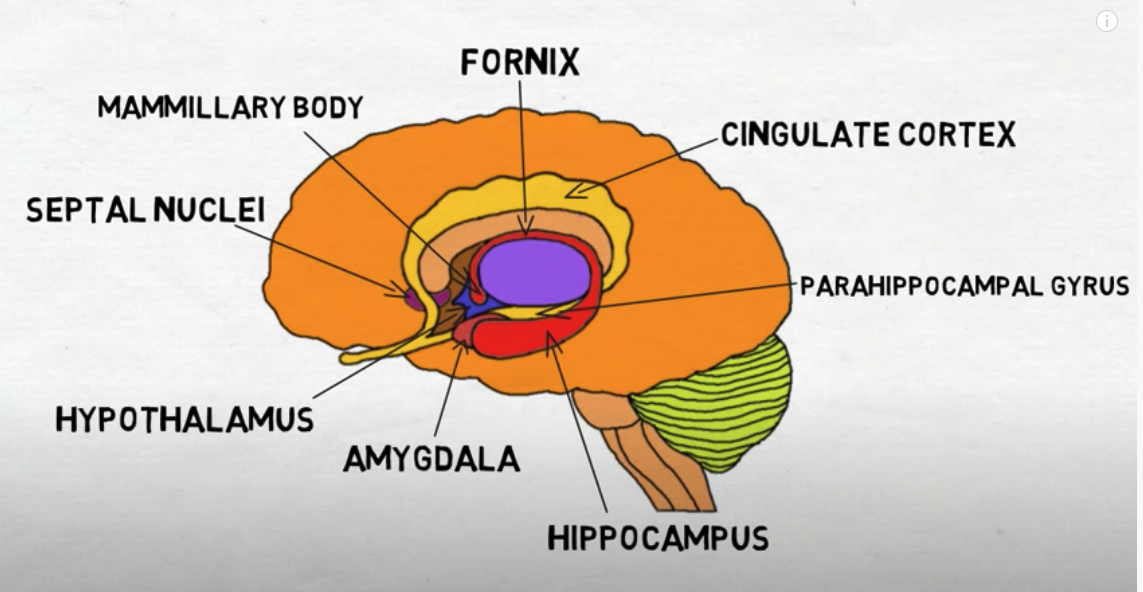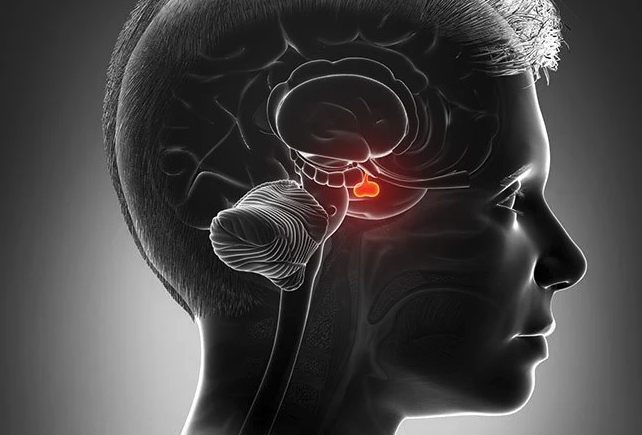Gossips and Epicenter of Emotions for our Existence - Study on Anatomy of Limbic System
Posted September 5, 2021 by Gowri Shankar ‐ 9 min read
Cognitive and communicative systems of human brain did not evolve to build mathematical models or to find philosophical insights during our primitive times - They evolved so that we can gossip. Gossipping is the fundamental attribute of human beings that made us who we are. Gossips enabled men to create languages, cultures and civilizations, do you know for what? to impress our respective girlfriends(and boyfriends, obviously) and partners - makes it the epicenter for our existence. Why do I call Gossips the epicenter of our existence - Through gossips we conveyed our emotions and feelings that are seldom spoken openly, however spoken definitely that changed the course of our history - from Helen of Troy to Monica Lewinsky, we gossipped and gossipped until the reign brought down to its knees(pun intended). One single act called gossip designed the destiny of humanity by producing flavors of emotions in the human brain, specifically in the limbic region. That region has to be studied because our quest is to build human like intelligence on a silicon wafer and emotions are the prime factor that makes a human human.
In the neuroscience series, we primarily focussed on mathematical modelling at nerve cell level in the past. Also studied the brain functions at high level through medical images, In this post we shall look at various parts and functions of the limbic region where we believe the emotions are governed.
Please refer our past posts on neuroscience here,
Inspiration for this post:
- Elon Musk announcing the arrival Tesla’s humanoid
- Shalu - the Indian humanoid built by a high school teacher

To stay alive, we need to know who in our society hates whom, who is sleeping with whom,
who is a cheat, and so on. Gossip meant we could develop tighter, more sophisticated systems
of cooperation.
- Yuval Noah Harari, Sapiens
Objectives
The only objective of this post is to list and study the parts and functions of limbic system - epicenter of emotions in the human brain.
Introduction
Walid Saba’s talk with Tim Scarfe and Machine Learning Street Talks team is a big eye opener for me. Walid’s thoughts and ideas gave a new perspective on the state at which the majority of our AI community work and their understanding of intelligence. His research focus on Natural Language Understanding(NLU) and he is brutally critical about the approaches we take on natural language processing through conventional deep learning algorithms. Precisely, there is a long distance between true understanding of the language and the current scheme of processing it through vectors, matrices and distances - i.e. we will never reach a decent convergence of intelligence with our current approaches.
Let us look at the historian Yuval Noah Harari’s thought on development of human cognitive and communicative systems - Harari says gossips are the fundamental attribute that human beings demonstrated to build a cohesive society. Gossips are quite private, seldom recorded in any of the conventional formats(e.g. books, stone inscription etc) but they shaped the development of the language processing. There is a research finding on non-human primates says that the female macaques were found to make 13 times as many friendly noises as their male counterparts. Through these noises they build long lasting bonds and emotionally superior society of females to look after their offsprings. In contrast the male ones chatted to both sexes equally.

- Image Credit: Whispering Monkeys Template
The results suggest that females rely on vocal communication more than males due to their need to maintain
the larger networks
- Nathalie Greeno, New Scientist
Quite intriguing, In macaque world - females must be far superior in their cognitive development and communication strategies(like we have in our human world). Who knows, they must be bullied by the males and treated by them like human beings treat their female counterparts. While reflecting on this idea, I got a light on why my female friends often call my emotional quotient is low and sensitive to others feelings are substandard. I may not represent the whole MANkind but the chances of me being an outlier is statistically insignificant. Meanwhile, I strongly believe males of most of the worlds(human world, macaque world, cockroach world etc) has to go a very long way in building emotional, cognitive and communication prowess instead of waging wars and indulge in petty fights like those macaque males of the non human primate world.
In all social species, communication helped individuals navigate their daily social lives, usually by influencing
the minds and behavior of group members. Resolve tension between the opposite forces of competition and cooperation.
- Klaus Zuberbuhler, Primate Export Professor of Univ of St.Andrews
I made a connection across Harari, Saba and the non-human macaques - an unusual connection of dots inspired me to write this blog on understanding the anatomy of the limbic system.
The Limbic System
The limbic region of the human brain is well protected and deeply buried underneath the cerebral cortex. We discussed the function of neo-cortex in one of our previous posts, I believe neo-cortex is the only critical organ in the brain superior to the organs of limbic region. The key reason for me to believe this is its ability to create, control and modulate emotions based on the stimuli in a data driven approach.

The limbic system is the part of the brain involved in our behavioral and emotional responses,
especially when it comes to behaviors we need for survival: feeding, reproduction and caring for our
young, and fight or flight responses.
- The Limbic System, Brain Anatomy from Queensland Brain Institute
Limbic region is not a single organ, it constitutes of bunch of different organs that are collectively responsible for hormonal production, regulation of thirst, hunger, mood, reward processing, learning etc. Amygdala and Hippocampus are the key organs that stand top among all for their function and efficacy.
Amygdala
Amygdala is the place where emotions are given meaning, they are 2 in numbers. One in each hemisphere of the brain where strong emotions like fear and pleasure are processed.
Fight or Flight Mode:
When there is a threat of physical harm to the person, his amygdala automatically activates the fight or flight mode and starts sending signals to release hormones to prepare the body for a fight or to run away from the threat. It is done by releasing the stress hormones Cortisol and Adrenaline from the adrenaline gland.
Amygdala is a reflexive organ, It immediately sends signals to counter the threat. Meanwhile the frontal lobe of the cerebral cortex makes a meaningful and data driven decisions - hence the cortex are far superior in their functions because of their ability to reason things.

When the threat is mild or moderate, the frontal lobes override the amygdala, and you respond in the most
rational, appropriate way. However, when the threat is strong, the amygdala acts quickly. It may overpower
the frontal lobes, automatically triggering the fight-or-flight response.
- Amygdala Hijack by Nancy Moyer
Hypothalamus
Homeostasis - Homeostasis is the function hypothalamus to maintain the body in balanced state. It monitors and controls the heart rate, blood pressure, body temperature etc. It is also called as the brain of the brain where most of the metabolic regulation happens through the secretion of neurohormones.
Sexual Dimorphism:
Hypothalamus is sexually dimorphic, i.e. the systematic difference in form between individuals of different sex in the same species. This property of the Hypothalamus makes it a strong candidate for study of emotion related differences that we see across the sexes of human being.

- Image Credit: Hypothalamus from Wikipedia
Here is the list of key functions of Hypothalamus
Body temperature
Thirst
Appetite and weight control
Emotions
Sleep cycles
Sex drive
Childbirth
Blood pressure and heart rate
Production of digestive juices
Balancing bodily fluids
- Jon Johnson, Medical News Today
Hippocampus
Hippocampus is the memory centre of the human brain, It is responsible for learning new things and long time storage and cataloguing of episodic memories. Sensory association of memory of unrelated topics happen here, for e.g. the association of certain religion with global terrorism or smell of cheese associated with a country of its origin.
Hippocampus is plastic and vulnerable - due to its plasticity, learning kind of new activities is enabled and for the same reason it gets damaged for variety of stimuli. It may not necessarily a anatomical damage but psychosomatic or neurological ones. Further, through the process called neurogenesis new nerve cells are continuously created.

The term hippocampus is derived from the Greek word hippokampus (hippo meaning "horse" and kampos meaning "sea
monster") because the structure resembles the shape of a sea horse. The structure was first described by the
anatomist Julius Caesar Aranzi. Because the hippocampus has been known of and observed for centuries,
it is one of the most studied areas of the brain.
- Kendra Cherry, Very Well Mind
Septal Nuclei
Here you go, another area of focused research for understanding emotions. Septal nuclei receive incoming connections from the other limbic organs - Amygdala, Hippocampus etc, It is kind of a mediator between cortex and the limbic structures.
The septal area is a subcortical region that has strong projections to emotion-generating areas and has a key
role in feelings of social connectedness and bonding.
- Virginia E. Sturm et al, Genomics, Circuits and Pathways in Clinical Neuropsychiatry, 2016
Mammillary Body
Mammillary bodies are found on the inferior surface of the hypothalamus responsible for recollective memory, though the memory information begins within the hippocampus. Damages in mammillary body result in amnesia kind of memory impairment but not amnesia.
Fornix
Fornix plays a key role in cognition and episodic memory recall, It is a white matter bundle that connects various nodes of the limbic circuitry
Parahippocampal Gyrus
Parahippocampal gyrus is responsible for memory encoding and retrieval. It plays a significant role in spatial memory and navigation.
The parahippocampal place area (PPA) is a functional region of the brain that responds more strongly to
images of scenes and places compared to other classes of visual stimuli and is critical for scene and
place recognition, as well as navigation
- Epstein and Kanwisher, 1998; Epstein, 2008
Cingulate Cortex
Cingulate cortex plays and important role in interfacing between emotional regulation, sensing and action. It is one another mediator that has reciprocal connections to the orbifrontal cortex(OFC), the basal ganglia and many other regions of the brain. The key point to note about Cingulate Cortex is, when it is damaged the person fail to associate actions with emotions.
This(Damage in cingulate cortex) can lead to anti-social behavior because the person does not realize
that their actions can hurt others or cause them distress.
- FlintRehab
Conclusion
In this post, we studied various parts and the functions of limbic system briefly. This is just an introductory guide that renders the high level details of a subject that is still a mystery. The inspiration for this post is Elon Musk announcing Tesla’s humanoid project and Shalu - the humanoid built by a high school teacher in India.
I have few reservations in accepting the need for a humanoid because the human form is not efficient for accomplishing most of the general purpose activities. The evolutionary process brought us here with limbs, torso and head but there are better form factors and topologies we can design for activity specific use cases. A human form is good only if it emote like a human being and we are far away from achieving that, i.e. true understanding of brain functions especially emotions.
Further, Is it possible to build mathematical models of the emote regions of the brain - added to the list of backlogs for future study.
References
- Why females love a good gossip… even if they are macaque monkeys from Daily Mail
- The Limbic System, Brain Anatomy from Queensland Brain Institute The University of Queensland, Australia
- Amygdala Hijack: When Emotion Takes Over by Nancy Moyer, 2019
- What Is the Hippocampus? by Kendra Cherry, 2020
- What does the hypothalamus do? by Jon Johnson, 2018
- Emotional Dysfunction in Psychopathology and Neuropathology: Neural and Genetic Pathways by Sturm et al 2016
- Mammillary Body Damage Results in Memory Impairment But Not Amnesia Kapur et al, The Neural Basis of Cognition, 1998
- Anterior Cingulate Cortex Damage: Signs and Treatments from FlintRehab, 2020